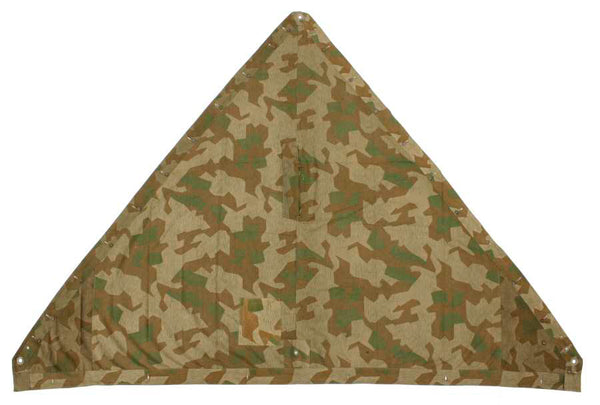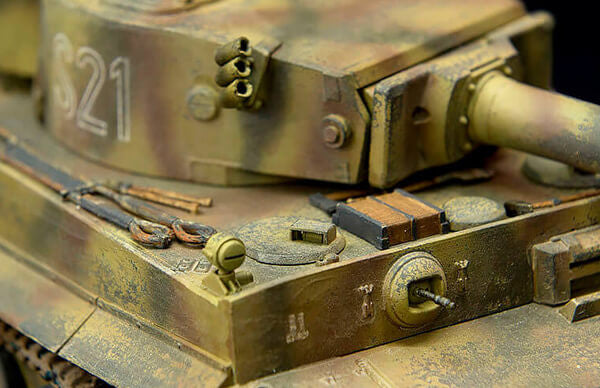German Army Zeltbahn 31 Pattern - Splittertarn or Splinter Camo (Splittermuster)

Zeltbahn's or Half Shelters were a fairly important piece of kit for the Wehrmacht infantryman during WW2. The pattern used on these personal tents/ponchos and of course also on many uniforms was known as Splittertarn (among other names). While working on a small infantry diorama we started thinking about the possibility of printing a Splittertarn pattern onto some thin card (on both sides to reflect the lighter shade underneath), or onto some nice paper stock to experiment with the results.

First thing to do was to find a vector pattern of the camouflage, but after a lot of searching, we couldn't find a vector pattern to download anywhere. So we made one using Adobe Illustrator and thought we would share it with anyone who needs it. Getting the colours right I think is a matter of personal preference, we prepared three variants, judge for yourself which is the most realistic or, if you have Adobe Illustrator or Photoshop, fine tune the colours yourself. Hope this helps someone who was unsuccessfully searching for this vector like us, please leave any comments below.
Maybe we should do some more vector camo patterns? Let us know what you think.
Free Vector Download's of our Splittertarn / Splinter Camouflage Fabric Print - follow the links below. Enjoy and please share this Blog post or follow us on Facebook or Instagram.
These are .ai files (If you need an eps please email us):
If you just want a PNG file (not a vector) see below:
Here is a bit of official background on the pattern:
Splittertarnmuster or simply Splittertarn or Splittermuster (splinter-pattern) is a four-colour military camouflage pattern developed by Germany in the late 1920s, and was first issued to the Reichswehr in 1931. It was first printed on the newly designed and issued triangular tent/poncho called the dreieckszeltbahn ("3-corner tent"). Known in German as Buntfarbenaufdruck 31 ("colourful print 31"), for its year of introduction, splittertarn was later issued on a very wide basis to practically all regular military (Wehrmacht) units. The pattern consists of a disruptive, zig-zag pattern of hard-edged wood-brown and medium green polygons printed on a light field-grey or tan background. A random pattern of green dashes, called "raindrops", was applied in places to improve the camouflage effect.

Proposed in 1931 and introduced in 1932, the four-colour camouflage patterns incorporated "splinters" on top of the 1918 colour pattern. This pattern included ochre, rust, and brown overlaid on a green foundation, with sharp corners between coloured patches. This new pattern was printed on zeltbahn (triangular tent) material, and could also be used as a camouflage rain poncho in the field. Both sides of the material showed the same pattern, but the printing was brighter on one side.
A subdued grey-beige tint replaced the yellow-ochre colour. On top of this background, green and brown irregular patterns were screen-printed. A final innovation applied to this camouflage colour printing were the "splinters" irregularly printed on the fabric. Directional, dark-green dashed lines ("grass") were printed in selected areas to help break up the silhouette. During the war, cost-saving measures required textiles to be printed with changed colours. In addition, many of the lower-cost two-colour options were abandoned. These cost-saving measures caused significant deviations from the original colour patterns.
Equipment in the stained colour printing units were issued to the following: Heeres-Splittertarnmuster 31, and Luftwaffen-Splittertarnmuster 41.


Some extra Zeltbahn images below showing the two tone sides, overview of construction and the variation in colours, Zeltbahn's were not all the same, some were just green or grey, without pattern.




Leave a comment
Comments will be approved before showing up.




Panzer Models
Author